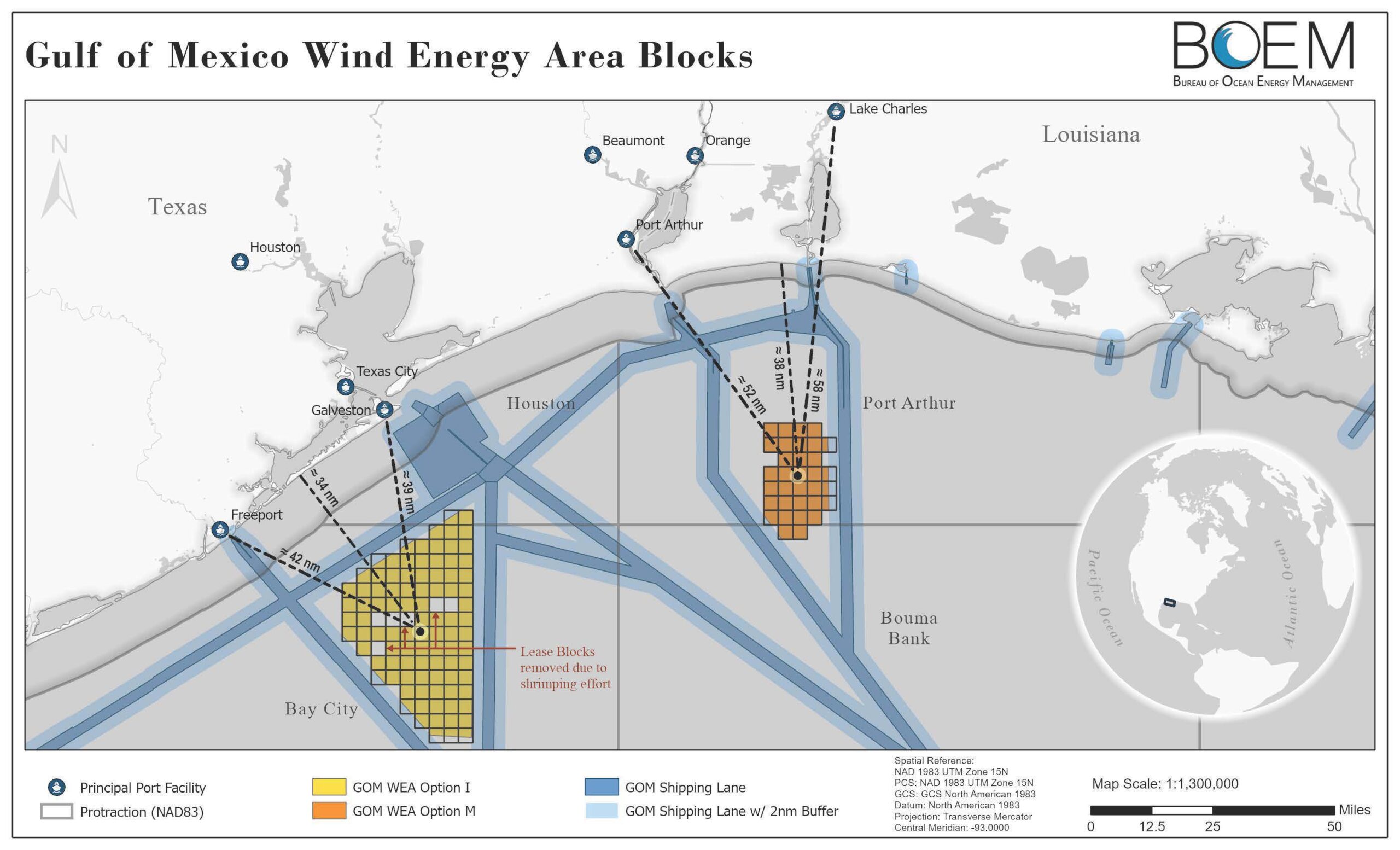NCCOS and the Bureau of Ocean Energy Management have partnered to create a spatial suitability model that identifies optimum locations for offshore Wind Energy Areas (WEAs) in the Gulf of Mexico. The comprehensive spatial planning process combines stakeholder engagement and rigorous analysis of ocean characteristics to find locations for wind energy development that minimize impacts to other ocean users and the environment. Two highly suitable areas were identified off the coast of Texas and Louisiana that cover 730,000+ acres and could power 1.3M+ homes every year. This effort supports the Biden Administration’s goal of deploying 30 gigawatts of offshore wind by 2030 while minimizing environmental impacts.
Why We Care
This project focuses on locating highly suitable areas for offshore wind energy development in the Gulf of Mexico. By harnessing the power of wind, we can reduce our nation’s reliance on fossil fuels and mitigate the impact of climate change. The Gulf of Mexico is a region with immense potential for wind energy due to its strong and consistent winds. However, finding the optimal areas for development while minimizing negative impacts on marine ecosystems and existing industries is a complex challenge.
What We Did
In collaboration with the Bureau of Ocean Energy Management (BOEM), NCCOS developed a spatial model that identifies the most suitable locations for offshore wind energy in the Gulf of Mexico. Our approach involved analyzing a wide range of data, including: national security; industry, navigation, and transportation; natural and cultural resources; and oceanographic and biophysical information. By examining these factors, we aimed to provide valuable insights into the past, present, and future of the Gulf’s marine environment.
Through our comprehensive marine spatial planning process, NCCOS increases transparency and reduces potential environmental impacts, while simultaneously deconflicting space-use impacts with other pioneering ocean industries. We engaged in partnerships with state and local government, local experts, and a range of other stakeholders to gather critical information and ensure the accuracy and relevance of our findings. NCCOS used only authoritative, best available data — 53 data layers across 6 different categories — to identify the areas that would be most suitable for wind energy development.
What We Found
Our findings are promising. Two areas, located 24 nautical miles off the coast of Galveston, Texas, and 56 nautical miles off the coast of Lake Charles, Louisiana, emerged as prime candidates for wind energy development. These regions encompass over 730,000 acres and exhibit tremendous potential to power more than three million homes. The identification of these areas has significant implications for meeting the nation’s clean energy goals and reducing carbon emissions.

Benefits of Our Work
The impact of our work extends far beyond the identification of suitable areas for offshore wind energy development in the Gulf of Mexico by contributing to the broader goal of deploying 30 gigawatts of offshore wind energy by 2030, as outlined by the President’s clean energy agenda. By providing stakeholders and decision-makers with accurate and comprehensive suitability models, we empower them to make informed choices that balance economic growth with environmental protection. This ensures the long-term sustainability of marine ecosystems while supporting NOAA’s New Blue Economy, which encourages a sustainable and equitable coastal economy that optimizes advances in science and technology to create data-driven economic opportunities and solutions to pressing societal needs.
Next Steps
Looking ahead, NCCOS efforts to support renewable wind energy development will continue to evolve and expand around the nation. Building on the foundation established through this modeling effort for the Gulf of Mexico, BOEM will refine the identified Wind Energy Areas into smaller lease sale parcels through public review and auction processes. Additionally, NCCOS will continue to partner with BOEM to apply this marine spatial planning approach in other regions along the U.S. coast. Adopting this reproducible and transparent methodology to additional regions will ensure that the interests of various stakeholders are represented as BOEM works to expand its wind energy portfolio.
